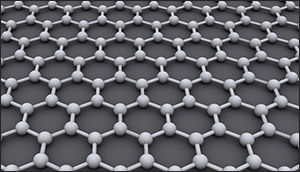Lithium ‘doping’ turns graphene into a superconductor
11. 9. 2015 | ExtremeTech | www.extremetech.com
Scientists from Canada and Europe have published results showing that “decoration” of graphene samples with lithium can change the behavior of electrons passing through it and turn the super-material into a superconductor.
It’s a property that was first predicted by a super-computer, now confirmed through physical experiment. It’s a breakthrough that could herald a new age of graphene electronics - though it’s still got a long way to go.

Graphene is often referred to as having very low electrical resistance - and it does - but the reality is that when compared with a true superconductor, a shielded wire made of graphene may as well be a block of wood. Superconductors are finicky, technical creations that depend on just one property for their definition: 100% of any electricity put into a superconducting system at one end must come out the other, unhindered by resistance of any kind.
There are still very low temperatures involved here. The “decoration” process in which the lithium atoms are attached takes place at just 8K, or -265.15 °C. Their measured transition temperature for superconducting graphene was even lower: 5.9K, or -267.25 °C.
That means that while graphene has been induced to have a truly incredible electrical property, it has not solved all our earthly technological problems. The big problem with the superconductors scientists have managed to create is that they all, like graphene, require cooling to “cryogenic” temperatures to work, meaning that we can’t create large or inexpensive quantities of superconductors for things like large-scale grid power upgrades or cheap fusion containment rigs.
Read more at ExtremeTech
Image Credit: Wikipedia
-jk-




